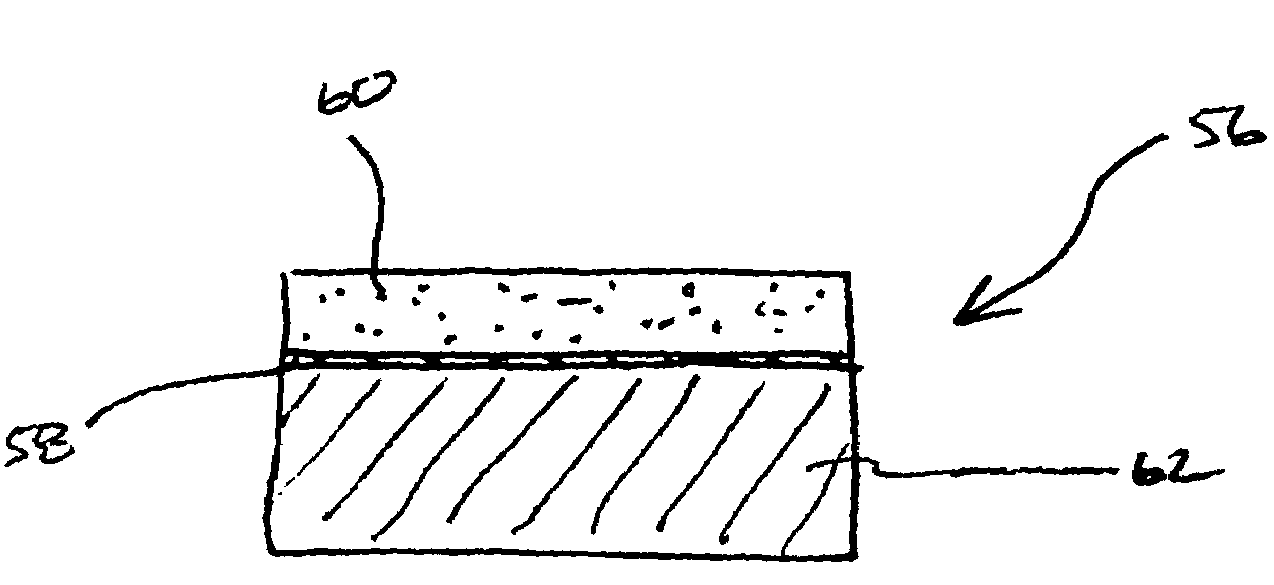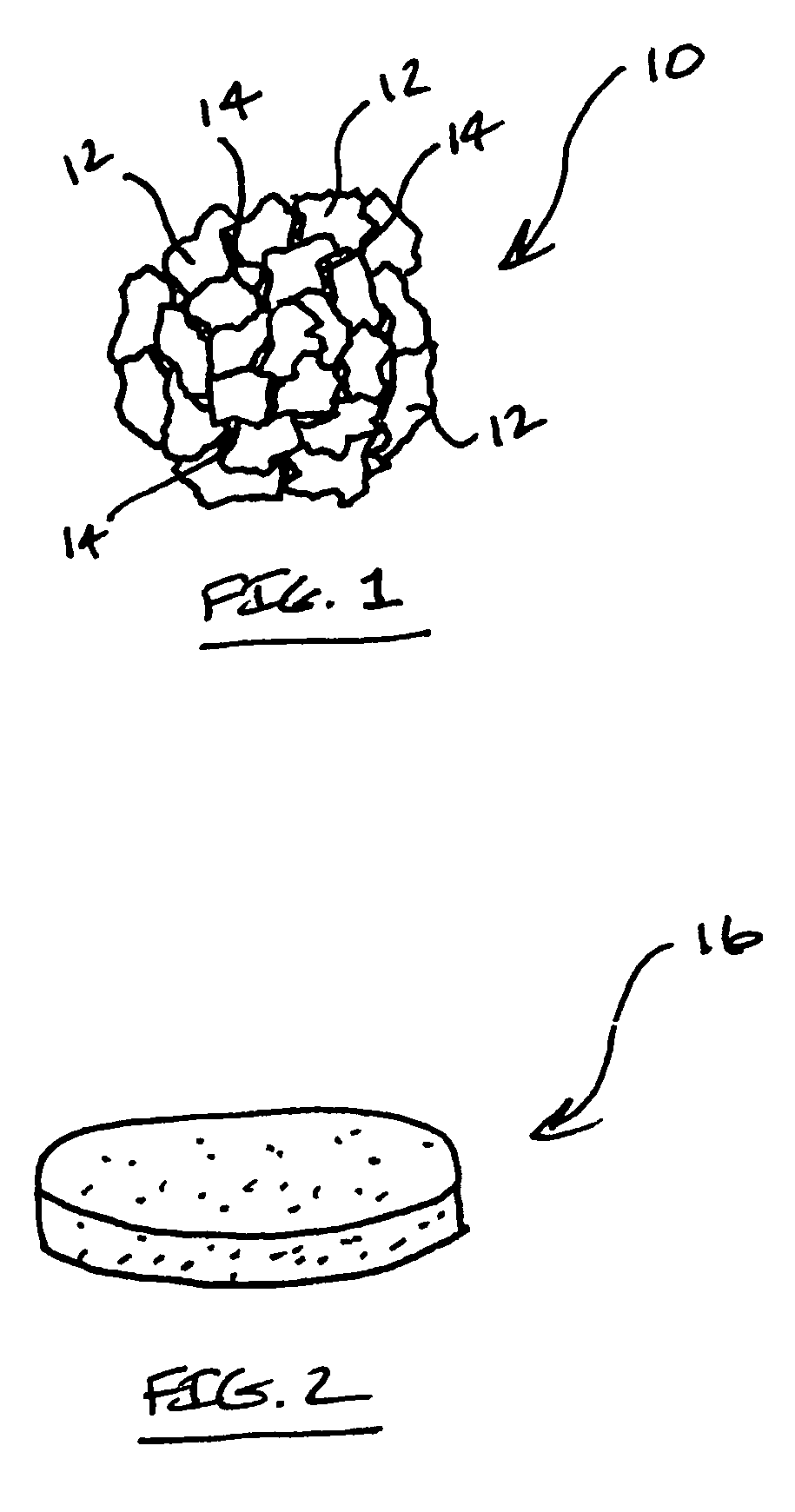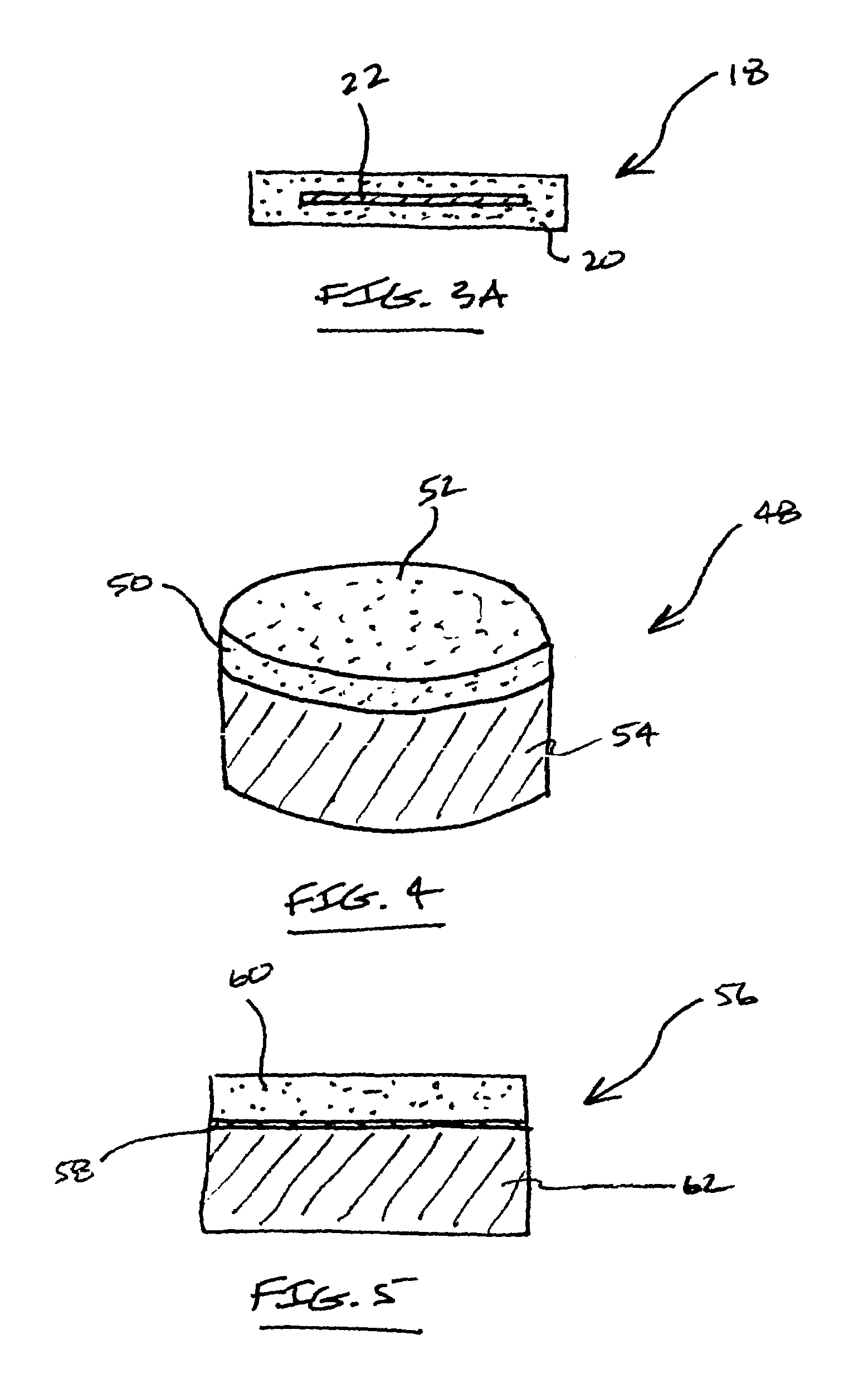Thermally stable ultra-hard material compact construction
a compact construction and ultra-hard material technology, applied in the field of ultra-hard materials, can solve the problems of limiting the practical use of pcd material to about 750° c, prone to thermal degradation during use, and formation of cracks and chips in the pcd structure, so as to improve the thermal expansion characteristics of the substrate, minimize residual stresses, and optimize bonding
- Summary
- Abstract
- Description
- Claims
- Application Information
AI Technical Summary
Benefits of technology
Problems solved by technology
Method used
Image
Examples
example
Thermally Stable Ultra-Hard Material Compact
[0082]Synthetic diamond powders having an average grain size of approximately 2-50 micrometers are mixed together for a period of approximately 2-6 hours by ball milling. The resulting mixture includes approximately six percent by volume cobalt solvent metal catalyst based on the total volume of the mixture, and is cleaned by heating to a temperature in excess of 850° C. under vacuum. The mixture is loaded into a refractory metal container and the container is surrounded by pressed salt (NaCl), and this arrangement is placed within a graphite heating element. This graphite heating element containing the pressed salt and the diamond powder encapsulated in the refractory container is then loaded in a vessel made of a high-pressure / high-temperature self-sealing powdered ceramic material formed by cold pressing into a suitable shape. The self-sealing powdered ceramic vessel is placed in a hydraulic press having one or more rams that press anvi...
PUM
| Property | Measurement | Unit |
|---|---|---|
| temperatures | aaaaa | aaaaa |
| temperatures | aaaaa | aaaaa |
| depth | aaaaa | aaaaa |
Abstract
Description
Claims
Application Information
 Login to View More
Login to View More - R&D
- Intellectual Property
- Life Sciences
- Materials
- Tech Scout
- Unparalleled Data Quality
- Higher Quality Content
- 60% Fewer Hallucinations
Browse by: Latest US Patents, China's latest patents, Technical Efficacy Thesaurus, Application Domain, Technology Topic, Popular Technical Reports.
© 2025 PatSnap. All rights reserved.Legal|Privacy policy|Modern Slavery Act Transparency Statement|Sitemap|About US| Contact US: help@patsnap.com



